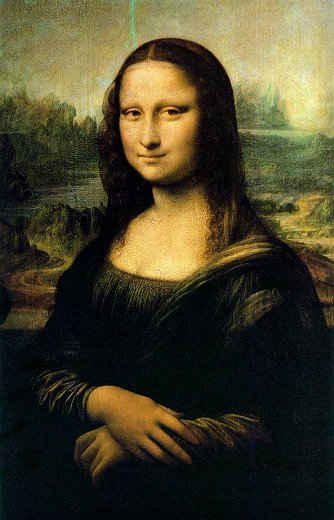 Hand With Reflecting Sphere, M. C. Escher (Dutch) b. 1898 , 1935, Lithograph, 31.8x21.3 cm
Hand With Reflecting Sphere, M. C. Escher (Dutch) b. 1898 , 1935, Lithograph, 31.8x21.3 cmMonday, May 5, 2008
 Hand With Reflecting Sphere, M. C. Escher (Dutch) b. 1898 , 1935, Lithograph, 31.8x21.3 cm
Hand With Reflecting Sphere, M. C. Escher (Dutch) b. 1898 , 1935, Lithograph, 31.8x21.3 cmStarry Starry Night
 Vincent Van Gogh (dutch) b.1853, Starry Night, 1889, Oil on Canvas, 73 × 92 cm, Museum of Modern Art, New York City
Vincent Van Gogh (dutch) b.1853, Starry Night, 1889, Oil on Canvas, 73 × 92 cm, Museum of Modern Art, New York CityVincent Van Gogh was born on March 30, 1853. He was part of the post-impressionalism time period. This peice of artwork is an example of impressionism because of the texture that it shows. You would not normally see a night sky that looks like someone had put it in a blender. This is because in many of his pieces, Van Gough chooses to go with an abstract approach. The colors on this painting make the on-looker's eye jump from spot to spot and the texture makes you feel like you could just reach out and touch the coils of white, blue, and green.
There are many possible meanings that could be associated with this painting. Some people even thought that Van Gogh was not in a stable mental position (kinda crazy) when he painted this peice. But no one can really no for sure what he really saw as he created this master peice. Perhaps this is actually what the sky looked like on that particular night (although I highly doubt it). What I belive that it symbolizes is a peaceful night over a small town, with shining stars and beautiful swirling galaxies. Maybe Van Gogh was trying to show what he thought the great beyond might be like. I don't know about you, but those patterns in the sky could possibly look a bit "alienish" to me.
Thursday, May 1, 2008
Thursday, April 24, 2008
Mona Lisa
 Leonardo da Vinci (1452-1519), circa 1503–1506, Oil on poplar, 77 × 53 cm, 30 × 21, Musée du Louvre, Paris
Leonardo da Vinci (1452-1519), circa 1503–1506, Oil on poplar, 77 × 53 cm, 30 × 21, Musée du Louvre, ParisThis painting was created by Leonardo da Vinci, who was born April 15,1452 and died May 2,1519. He is often referred to as "The Renaissance Man" because he was extremely curious and inventive. Two of his paintings Mona Lisa and The Last Supper have the unique honor of being the most famous, most reproduced, and most parodied prtrait and religous painting of all time. Wow! I wonder if Leonardi da Vinci ever predicted that his works could be that popular. I choose this piece of artwork because just be looking at it I get a sense of mystery. What could this women be smiling so slyly about. Perhaps she has a secret, something we will never know because by now she is undoubtedly dead. Something interesting about this painting is that if you look closely, she does not have any eye brows. Belive it or not, during Renaissance it was the fashion for women to shave their eye brows completely off! Perhaps as time goes on, the mystery behind this painting will unfold...
This painting is well... lets just say an interesting one to analyze. So many theories are behind it. Mine however probably differs from that of many others. In my personal opinion, I think that the story behind this painting was a secret crush, as indicated by the woman's shy little smile. An idea I greatly doubt, but an intrigueing idea non the less, is that some people think that this is a self portrait of de Vinci himself as a woman! Maybe crazy, but it might even be true!
Friday, April 18, 2008
Faith Ringgold Credit Lines

Wednesday, April 16, 2008
Dance at Bougival

Pierre-Auguste Renoir (1841 - 1919) Dance at Bougival 1883, Oil on canvas,181.8 x 98.1cm,Museum of Fine Arts (Boston)
The artist of this painting was born on February 25, 1841 in Limoges France. Interestingly, he got involved in the arts when he found out that he was a good singer but thought that music was not for him. At 13 he became an apprrentice for a porcelin painter and that is what he did for the next 5 years. He was fired from the porcelin factory wehn machines were brought in to do his job. Eventually he joined an art school and started his career as a painter once he had graduated. Throughout his 60 years as an active painter, Renoir created about 6,000 paintings. This piece of artwork is an example of impressionalism and almost even seems to come alive. It is as if these two serene dancers were to jump off the canvas and continue their waltz. Renior was one of the leaders in the Impressionalism movement and I think that this peice shows it. He has also made a few other paintings of people dancing in different settings.
The idea being expressed behind this painting is simple, fun and romance. You can see this by noticing the way the man is lovingly looking at the woman and by the way that they are both merrily dancing. The jig that they are doing adds an element of fun to the painting that makes you want to join in and dance along. Even the people smiling and talking in the back ground seem to be having a jolly good time. I mish that I could skip right into the painting? Wait a second... why wasn't I invited to the party?!
